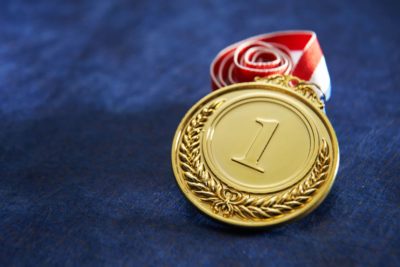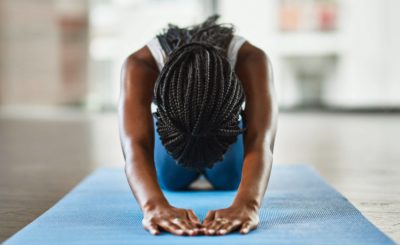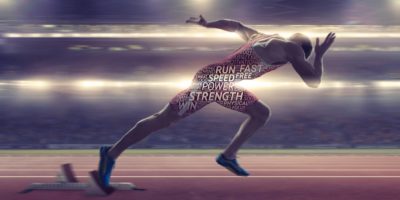
Simone Biles knew something wasn’t right. Warming up for the team gymnastics final at the Tokyo 2020 Olympic Games, the athlete known as the “G.O.A.T.” may have looked fine to the TV viewing audience. But internally, she was struggling.
Biles’ decision to pull out of the event to protect her mental and physical health came as a shock to many. Yet, she is back, better than ever and competing in the 2024 Summer Olympics in Paris.
Sources of pressure
Pressure can come from many places. A wide range of people support athletes in their pursuits, including family members, coaches, team members and more. At times, it can be hard to live up to all their expectations, and the internal pressure athletes place on themselves.
That was true for skier Mikaela Shiffrin, who arrived at the Beijing 2022 Olympics looking to win her third consecutive gold medal. She instead suffered a series of uncharacteristic crashes.
“That’s disappointing for me, it’s disappointing for my whole team, for the coaches, for everybody who’s been working so hard,” she told reporters afterward.
Especially in the national spotlight of the Olympics, athletes can feel as though they have the weight of the world on their shoulders.
“Pressure can be an asset to people at times, bringing out their best,” says Edward Hirt, a professor of brain sciences and psychology at Indiana University, to the Los Angeles Times. “[…] But we also know that those pressures can be debilitating and make you choke. I suspect the pressure mounts as people have been successful in the past.”
Pre-event troubleshooting
Anxiety can affect people in a number of ways. A 2017 review of research in the Journal of Sports Medicine notes that “in a sport context, anxiety is often regarded as a typical response to a situation where an athlete’s skills are being evaluated. Anxiety is often characterized by a range of physiological (e.g., sweating, increased heart rate), behavioral (e.g., biting fingernails, fidgeting), and/or cognitive (e.g., negative thoughts, inattention) signs and symptoms.”
To deal with it all, athletes stack their toolboxes with skills to handle the pressure and cope with stress. For some, that means training their minds to embrace what they’re feeling, using positive self-talk, and even working to reframe stress as a good thing.
“If you view that feeling of adrenaline as a reason you’re going to fail, it can work against you. But if you view it as a signal that you’re going to do well, it can boost performance,” says sports mental performance coach Michael Lardon, M.D., to ESPN.
Athletes may develop a number of practices to ease performance anxiety, including visualization, routines and mindfulness.
The importance of visualization
Sports psychologists have long used positive visualization, or mentally rehearsing a great performance, as a tool to prepare elite athletes for big competitions. Some now take it a step further, advising athletes to not just see themselves doing well — but to imagine their entire competition experience, using all five senses. They call it “imagery.”
“You have to smell it. You have to hear it. You have to feel it, everything,” says Olympic skier Emily Cook, describing her imagery process to The New York Times.
“The more an athlete can imagine the entire package, the better it’s going to be,” says Nicole Detling, a sports psychologist with the United States Olympic team, in the Times article. That might include imagining their experience even beyond their athletic performance, down to details like speaking at news conferences or riding the bus ride to the competition venue.
The importance of routines
Some athletes employ tried-and-true routines before they compete, to help calm their minds and keep negative thoughts at bay. Their routines can be serious, such as working through a visualization process, or include elements that are more lighthearted – such as playing a video game.
“When elite athletes compete, they have to figure out what their routine is,” says Olympic diver David Boudia to PEOPLE Magazine. “[Sometimes] I’m waiting, you know, 20, 30 minutes in between dives. I have to figure out what my mind is going to be on. So I think the ritual or routine that I have is when I’m not diving, I need to picture that I’m staying focused. And one of the silly ways that I do that is […] I play Tetris.”
Scientists are looking into whether maintaining a routine could lead to changes in performance. Some research suggests that having a pre-performance ritual may regulate the brain’s response to personal failure.
The power of mindfulness

Sports psychologist Michael Gervais, Ph.D., says in the GQ article that mindfulness begins with an “awareness of our thoughts, emotions, our body sensations and the unfolding environment around us.”
He says developing this awareness over time can give athletes the ability to respond constructively to the present moment, helping to avoid poor performance when it really counts.
Knowing when to step away
No matter how many skills and tools athletes develop to manage performance anxiety, times may come when they need to step away. However, stepping back to manage their mental health doesn’t have to negatively affect their career.
No matter how many skills and tools athletes develop to manage performance anxiety, times may come when they need to step away. However, stepping back to manage their mental health doesn’t have to negatively affect their career.
These open conversations among athletes and mental health professionals support the spirit of truly strong – and healthy – competition.
We are rooting for Simone Biles and Team USA!
For more about these topics, please read these blog posts:
Our articles are for informational purposes only and are reviewed by our Medical Information team, which includes PharmDs, MDs, and PhDs. Do not make any changes to your current medications or dosing without consulting your healthcare provider.
The GeneSight test must be ordered by and used only in consultation with a healthcare provider who can prescribe medications. As with all genetic tests, the GeneSight test results have limitations and do not constitute medical advice. The test results are designed to be just one part of a larger, complete patient assessment, which would include proper diagnosis and consideration of your medical history, other medications you may be taking, your family history, and other factors.
If you are a healthcare provider and interested in learning more about the GeneSight test, please contact us at 855.891.9415. If you are a patient, please talk with your doctor to see if the GeneSight test may be helpful.








